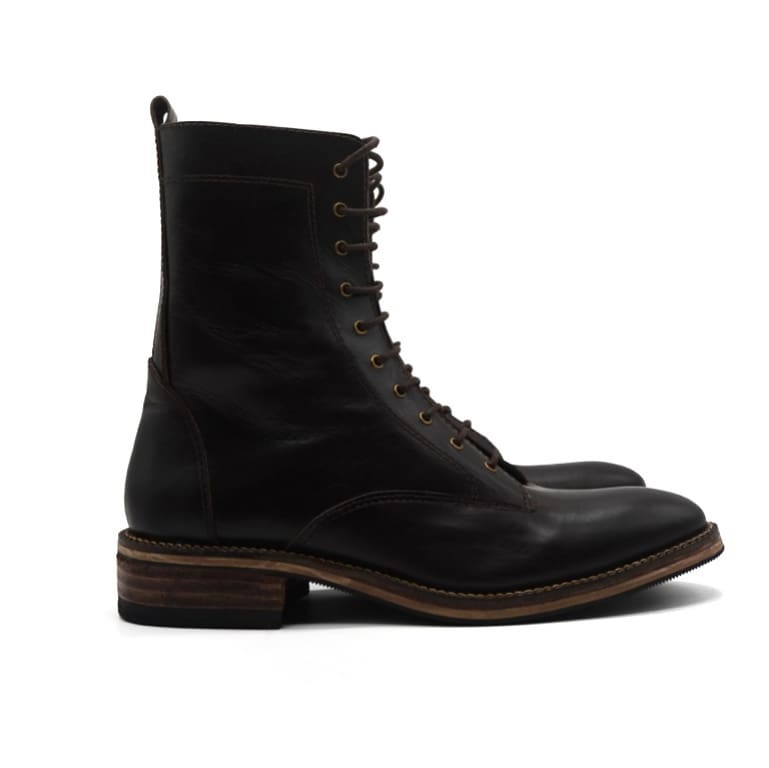The anatomy of a quality leather shoe!
Ever wondered what goes into making a truly exceptional leather shoe? It's a masterful blend of craftsmanship, premium materials, and thoughtful design, all working in harmony to create comfort, durability, and timeless style.
STORY FROM THE EAST


The Deconstructed Masterpiece: An In-Depth Look at the Anatomy of a Quality Leather Shoe
When you slip your foot into a pair of truly exceptional leather shoes, you're not just putting on footwear—you're engaging with centuries of craftsmanship and a carefully orchestrated symphony of materials. A quality leather shoe is a complex, durable machine built from the ground up. Understanding its anatomy reveals why premium footwear is a worthy, long-term investment.
Here is a comprehensive breakdown of the key components that define a high-quality leather shoe, going beyond the surface to the structure that provides comfort and longevity:
1. The Upper: The Skin and Soul
The Upper is everything visible above the sole. Its material choice is paramount:
Full-Grain Leather: This is the gold standard. It includes the entire grain layer, making it extremely durable, highly breathable, and allowing it to develop a rich patina (a beautiful, unique aging sheen) over time. Imperfections are minimal, and its fibrous structure is dense.
Top-Grain Leather: More common, with the outermost layer buffed or sanded off to remove natural imperfections. It's softer and more pliable from the start but won't develop a patina as beautifully as full-grain.
The vamp (front), quarters (sides), and heel counter (stiff internal structure at the back for support) all work together to define the shoe's shape and support.
2. The Lining: The Inner Comfort
Often overlooked, the Lining is crucial for comfort and foot health:
Full Leather Lining: This is a hallmark of quality. It wicks away moisture more effectively than synthetic materials, allowing the foot to breathe and preventing excessive heat buildup. It also helps the shoe maintain its shape.
Heel Lining: Typically reinforced with a separate piece of leather or suede to prevent slippage and excessive wear and tear where friction is highest.
3. The Insole (Footbed): Personalized Support
The Insole is the piece of material directly beneath your foot. In high-end construction, this is usually a thick piece of vegetable-tanned leather.
The Magic: Unlike pre-molded or synthetic inserts, a quality leather insole will gradually compress and mold to the unique contours of the wearer’s foot, creating a truly customized fit over time. This personalized support is a core reason why quality shoes become more comfortable with age.
4. The Welt: The Key to Longevity
The Welt is arguably the most defining feature of a premium shoe. It's a strip of leather that runs around the perimeter, securely stitching the upper, the insole, and the outsole together.
Goodyear Welt Construction: The ultimate benchmark. This complex, multi-step process creates a virtually waterproof seal and, most importantly, allows the shoe to be resoled repeatedly without damaging the upper. This turns the shoe into a lifelong item.
Blended Constructions (Blake Stitch, Cemented): While Blake-stitched shoes are sleek and flexible, and cemented shoes are lighter, neither offers the same level of durability or ease of resoling as a Goodyear-welted shoe.
5. The Midsole and Shank: Structure and Stability
The Midsole: Positioned between the insole and the outsole. In many welted shoes, the space created by the welt is filled with a cushioning material—historically cork. Cork provides excellent shock absorption, molds to the foot, and adds insulation.
The Shank: A stiff piece of material (often steel, wood, or fiberglass) inserted into the sole between the heel and the ball of the foot. The shank provides crucial arch support and prevents the shoe from collapsing, maintaining its structural integrity and stability over years of use.
6. The Outsole: The Foundation
The Outsole is the part that hits the pavement. It requires a balance of durability, grip, and flexibility.
Leather Soles: Offer classic elegance, breathability, and better flexibility. They are often preferred for dress shoes but require more care and are less durable in wet weather.
Dainite/Commando Rubber Soles: High-quality rubber compounds that offer vastly superior grip, water resistance, and longevity without compromising the overall aesthetics of the shoe.
Conclusion:
A quality leather shoe is a system of engineered components. When every layer—from the full-grain leather upper to the sturdy shank and the resolable welt—is constructed with attention to detail, the result is more than just footwear. It's a durable, comfortable, and sustainable piece of wearable art that gets better, not worse, with age.








